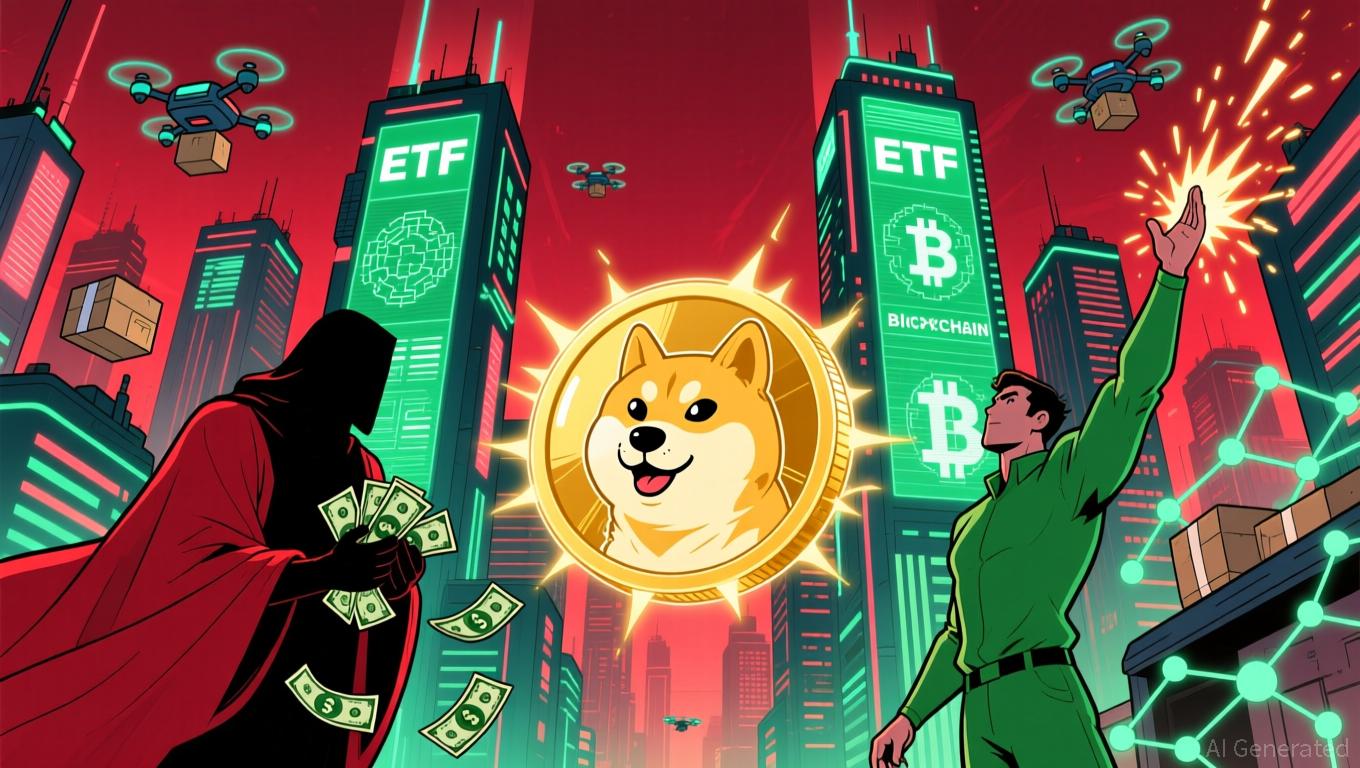Hyperliquid News Today: Reduced Fees or Doubts? Hyperliquid’s Bold Strategy for Expansion
- Hyperliquid, a top-20 DeFi exchange, faces a 25% HYPE token price drop to $25 amid market volatility and declining investor confidence. - Its HIP-3 Growth Mode initiative slashes trading fees by 90% to attract new markets but has yet to reverse downward trends or boost liquidity. - Analysts warn fee cuts may not address long-term user retention challenges in a crowded DeFi landscape dominated by centralized rivals like Binance. - Market skepticism persists as traders await volume explosions and tighter s
Hyperliquid, a well-known decentralized exchange, has dropped out of the top 20 cryptocurrencies by market cap, catching the eye of market watchers who foresee its token potentially falling another 25% to reach $25. The platform’s native HYPE token has slipped 6%, now trading under $40, signaling a notable change in investor outlook as the broader crypto market faces turbulence.
Launched in November, the HIP-3 update aims to position Hyperliquid as a competitor to established blockchain networks by offering “costs that are 5-10 times lower,” according to a post from an X account. The plan is to attract “untapped assets” like real-world yield products and tokenized government bonds, which have often been overlooked by conventional blockchain platforms,
Hyperliquid’s recent struggles reflect a larger pattern in the digital asset space, where institutional enthusiasm often meets resistance from retail sellers. For example,
Analysts warn that Hyperliquid’s valuation could remain exposed to shifts in the global economy and regulatory changes. Although the platform’s emphasis on affordable, high-liquidity trading matches industry demands, its success in keeping users will hinge on how well it executes its expansion plans. The projected 25% drop to $25
As the digital asset landscape continues to change, Hyperliquid’s HIP-3 approach is a bold attempt to drive growth through lower fees. However, unless it can clearly set itself apart from competitors such as Bybit and Binance, the exchange may find it difficult to reclaim a spot among the top 20. At present,
Disclaimer: The content of this article solely reflects the author's opinion and does not represent the platform in any capacity. This article is not intended to serve as a reference for making investment decisions.
You may also like
Bitcoin Updates: ETF Outflows Push Bitcoin to Lowest Point in Seven Months Amid Market Turmoil
- Bitcoin fell below $83,400, its lowest in seven months, as U.S. spot ETFs saw $3.79B in November outflows, led by BlackRock’s $2.47B loss. - Record $903M single-day ETF redemptions accelerated crypto and equity market selloffs, with Nvidia and crypto stocks dropping sharply. - Ethereum ETFs lost $1.79B, while altcoin funds like Bitwise’s XRP gained $105M, reflecting shifting investor preferences amid liquidity concerns. - Analysts attribute the selloff to macroeconomic uncertainty and delayed Fed rate cu

Dogecoin News Today: Grayscale DOGE ETF Debut May Trigger a Wave of Institutional Interest This November
- Grayscale's DOGE ETF launches Nov 24, aiming to boost institutional adoption of the meme coin amid SEC approval. - BlockDAG's $436M+ presale outpaces ADA/BCH, leveraging hybrid PoW-DAG tech and 3.5M miners to attract 312K holders. - Ethereum faces $2,850 support pressure after FG Nexus sells 11,000 ETH, triggering $170M in 24-hour liquidations. - DOGE hovers near $0.15 support with mixed technical signals, while ETF optimism contrasts with ongoing distribution trends.

ZK Atlas Enhancement: Leading the Way in Blockchain Expansion and Enterprise Integration
- ZKsync's 2025 Atlas Upgrade resolves blockchain scalability trilemma via modular architecture, achieving 15,000–43,000 TPS with 1–500ms finality. - Institutions like Deutsche Bank adopt ZKsync for cross-chain settlements, while TVL in ZK ecosystems hits $3.5B and ZK token price rises 50%. - Compliance features and EVM compatibility address institutional needs, with $15B in Bitcoin ETF inflows accelerating adoption of tokenized assets and RWAs. - Analysts project 60.7% CAGR for ZK Layer-2 solutions throug
ZK Technologies' Price Soars: The Intersection of Major Scalability Advances and Growing Institutional Interest
- ZK Technologies surged to $0.085–$0.090 in late 2025, driven by ZK rollup innovations and institutional adoption. - ZK rollups achieved 15,000 TPS by October 2025, with Ethereum's EVM optimization reducing proof costs 50-fold. - Deutsche Bank , Sony , and Citibank adopted ZK-rollups for confidential settlements and cost-efficient transactions. - Deflationary token model and fee buybacks increased scarcity, driving demand and value accrual. - ZK-based solutions now address scalability and privacy, becomin